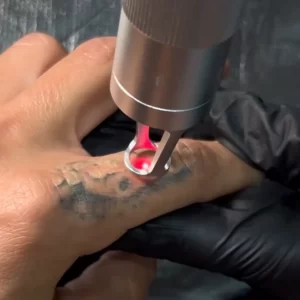Electrolysis is a popular method for permanent hair removal. However, one common concern among individuals considering electrolysis treatment is the level of pain associated with the procedure. In this article, we will explore the pain experienced during electrolysis and provide insights into managing any discomfort that may arise.
Understanding Electrolysis
Electrolysis is a hair removal method that targets the hair follicles by using heat or chemical energy to destroy the hair root. It is considered a safe and effective technique for achieving permanent hair reduction. The process involves inserting a fine needle into each hair follicle, and then an electrical current is applied to destroy the hair root.
The Perception of Pain
Pain is subjective, and individuals may have different pain thresholds. The pain experienced during electrolysis varies depending on factors such as the individual’s sensitivity, the treatment area, and the skill of the electrologist. Some describe the sensation as a mild tingling or stinging feeling, while others may perceive it as discomfort or pain.
It is essential to communicate with your electrologist and discuss any concerns you have about pain before starting the treatment. They can provide recommendations or techniques to help manage discomfort during the procedure.
Managing Discomfort
While electrolysis may cause some discomfort, there are various strategies you can use to manage any pain effectively:
1. Topical Anesthetics
Before the treatment, you can apply a topical anesthetic cream or gel to numb the treatment area. This can help reduce the sensation of pain during the procedure. It is advisable to consult with your electrologist or a medical professional to determine the appropriate anesthetic product to use.
2. Deep Breathing and Relaxation Techniques
Practicing deep breathing exercises and relaxation techniques can help alleviate anxiety and reduce pain perception during electrolysis. Take slow, deep breaths throughout the procedure to relax your body and mind.

3. Over-the-Counter Pain Medication
If you anticipate experiencing pain during the procedure, you may consider taking an over-the-counter pain reliever, such as ibuprofen, acetaminophen, or aspirin. However, it is essential to consult with a healthcare professional before taking any medication.
4. Choosing a Skilled Electrologist
The skill and experience of the electrologist can significantly impact the level of pain experienced during electrolysis. It is advisable to choose a certified and experienced professional who can perform the procedure with minimal discomfort.
The Aftermath
After the electrolysis session, it is normal to experience some redness, swelling, or skin sensitivity in the treated area. These post-treatment effects are temporary and typically subside within a few hours or days. Your electrologist may recommend applying a soothing cream or utilizing cold compresses to alleviate any discomfort.
In conclusion, while electrolysis may cause some discomfort, the pain experienced is subjective and varies among individuals. By employing strategies such as using topical anesthetics, practicing relaxation techniques, taking over-the-counter pain medication, and selecting a skilled electrologist, you can effectively manage any discomfort during the procedure. It is crucial to communicate openly with your electrologist and discuss any pain concerns you may have to ensure a comfortable electrolysis experience.
